Every e-commerce merchant knows that returns are inevitable as online shopping lacks the opportunity for customers to actually see and feel the goods before the purchase.
In fact, offering returns is vital for online stores and free returns have become a must - half of the consumers claim they will take their business elsewhere if such an option is not offered, BarclayCard has found.
This, of course, possesses many challenges for online retailers as returns account for $400 billion of lost sales for US retailers yearly. Still, merchants need to embrace the returns process and instead of seeing it as a problem, take it as an opportunity to build a loyal customer base and boost future sales.
Keep reading to gain an insight into e-commerce returns solutions that will help you avoid unnecessary revenue loss, reduce your churn rate and keep customers happy.

Main reasons customers return ordered goods
It’s often believed that the majority of returns happen due to “serial returners” who order goods with the intention of returning them, but the statistics show otherwise. The greatest part of returns happens due to retailers’ errors, not the customers’.
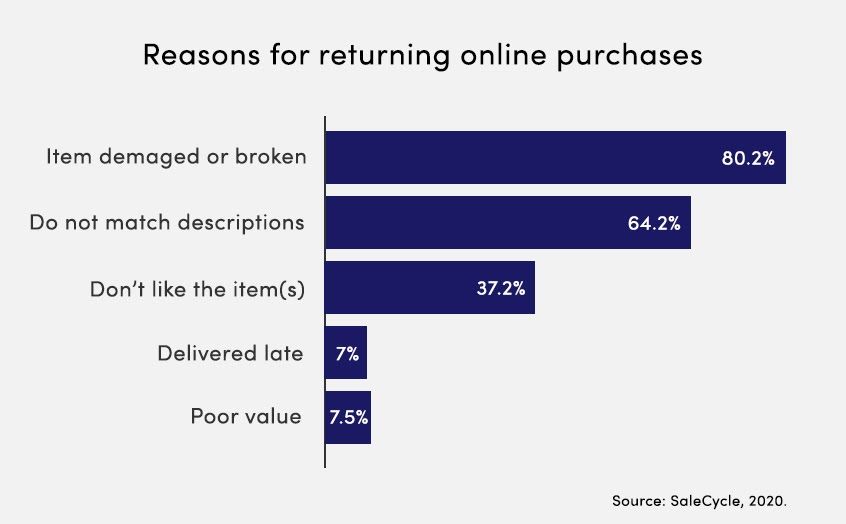
Let's explore the most common reasons why customers return purchased items.
Items are damaged or broken
The main reason for returns is that the ordered item has suffered damage during their journey to the customer. And while most often the damage occurs during delivery, it’s still the retailers’ responsibility to compensate for the faulty items and keep the brand’s reputation, not the couriers’.
If your goods arrive damaged often, you need to take up the matter with your outbound carrier and make necessary arrangements to sort out the issue - whether changing your courier altogether or insuring your shipments.
Goods don’t meet expectations
If numerous customers claim that the ordered goods don’t meet their expectations, you should look at how you advertise the items on your site. Perhaps it’s time to update your product description and create more realistic product imagery.
Incorrect shipment
Incorrect shipments often happen because the wrong style of the intended product was shipped out. To avoid such returns, go over your organizational system and make necessary adjustments that help easily detect different products, sizes, colors, etc.
Products with a high return rate
When looking at e-commerce returns rate by category, it’s clear that clothing and footwear are the most often returned products, while health & beauty and electrical products have the lowest return rate.
The reason why the fashion e-commerce return rate is the highest is most likely because the sold products did not have a detailed enough description and did not fit the buyer.
And products with low return rates are usually goods that customers are already familiar with - these could be make-up products they have tried before or an electronic device they have conducted in-detail research on.
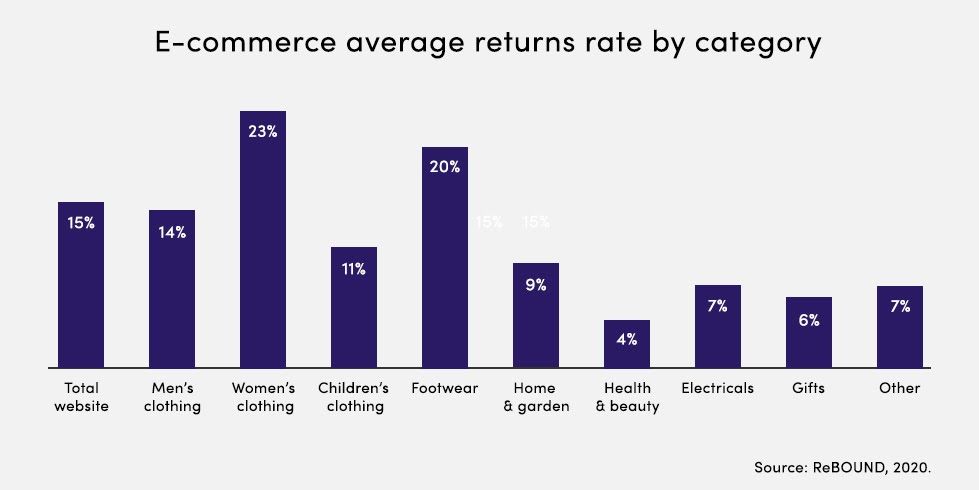
Knowing that it’s vital for fashion e-commerce retailers to devise a plan how to best avoid a high number of returns.
10 ways how to reduce e-commerce return rates
Now that we understand why returns are most likely to occur, we can start tackling the problem.
It all comes down to applying a customer-first strategy. With the following ten best practices that put customers first, you can minimize your e-commerce store’s return rate and start building a loyal customer base.
1. Display a clear product policy
67% of customers check the returns policy before making a purchase, and 92% of customers will buy again when the returns process is simple, according to Invesp.
Key elements that make returns experience convenient are:
- Free shipping on returns. Additional costs will only increase frustration, especially if customers have to pay extra on something incorrectly described or damaged.
- Include returns packaging and labels. If an upset customer needs to get access to a printer to create their own shipping label, search for packaging and pay for return shipping, it’s unlikely they will ever do business with you again.
- Provide detailed instructions. Give your customers peace of mind by providing step-by-step instructions on managing returns. For example, you can create a detailed video covering the process. And believe us, your customer service team will also thank you if they don’t have to write lengthy explanations every time someone wants to make a return.
- Set clear deadlines. Don’t hide your deadline in small print but highlight it so customers can clearly understand how much time they have if they wish to return their order.
- Add a section for returns in your FAQ. Even if you have provided a detailed guide on making returns, people might still have additional questions and want reassurance that they are following the proper instructions, and your FAQ page is where they will likely turn to.
2. Add accurate and detailed product descriptions
Each of your store’s products should be accompanied by a product description that displays a clear value to the potential customer.
An excellent product description clearly shows customers your brand authenticity, why they should choose your product over competitors, and why it is the best fit for them.
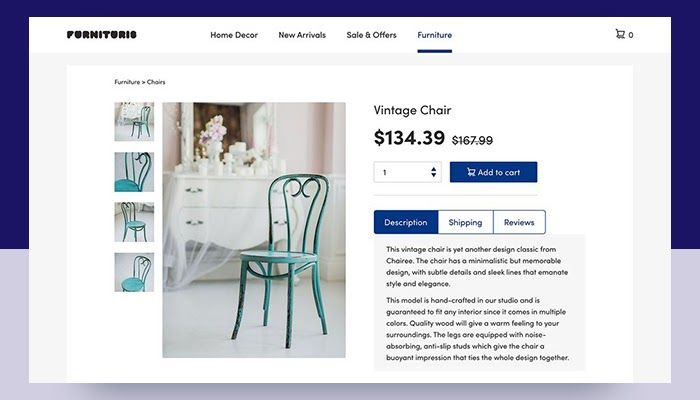
Some tips for creating compelling product descriptions:
- Include all the necessary details. Add all the essential details for customers to understand your products - list the size, color, material, washing, specifications, etc. When you notice users reaching out to you asking about specific product features, add them to your description as well.
- Make it easy to read. Providing accurate and detailed descriptions often results in a cluttered and somewhat overwhelming cluster of information. To avoid confusing customers, create different tabs for relevant information. E.g. “description”, “specifications”, “shipping”, “reviews”, etc.
- Keep your target audience in mind. Use phrases and words that are the most relevant to your target audience to keep them interested.
3. Create high-quality product images
Product images are a must when selling something online - they will help make a great first impression and tell your brand story.
Key suggestions for creating detailed product photography:
- Capture products on a white background
- Use different shots to show your product from different angles
- Show the product up close and make sure the product covers most of the image
- Capture images in HD to provide more detail and add professionalism
In other words, you want to refrain from having any distracting features or a busy background as it will make your images look less professional, and it’s harder for customers to see the product.
Besides using white background imagery, take contextualized images as well that create a story around your brand and the items you are selling. Such photos will inspire customers to complete a purchase as they gain a better understanding of how the items would look in their lives.
Moreover, contextual photos are also fitting for shoppable social media that help you make extra sales.
And whatever you do, keep in mind that it’s crucial to showcase your products as they actually appear once customers receive them.
4. Include product reviews and customer photos
Allowing customers to share their experiences and photos is highly valuable as it helps to build trust and get a feel of how the product will look in real life.
After all, 89% of customers consult reviews before making a purchase anyway. Therefore, offering a simple option to get an overview of how satisfied others are with the ordered goods will help customers make up their minds and result in fewer returns later on.
For example, Asos always asks for customers' feedback on the item's fit and quality and even encourages them to share photos. This approach provides more accurate information for potential customers and helps them pick the right product and select the most fitting size of the clothing.
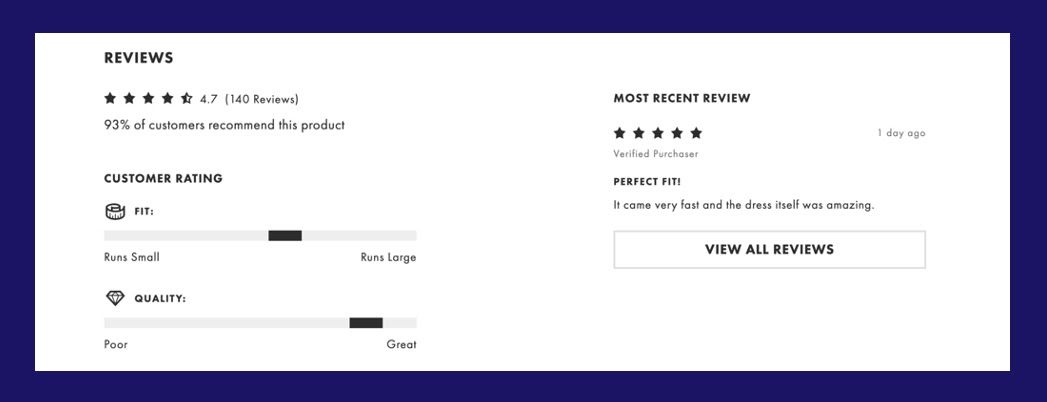
5. Use technology for virtually trying on products
Numerous returns happen because customers have not had the chance to try the products and see how they would look on them. So naturally, businesses have been trying to find ways to enable customers to try on clothes or test products by using technology.
One of such solutions is developed by Wanna, which enables merchants to integrate the virtual try-on to their app or website. Once the feature is enabled, customers can try on sneakers virtually before purchasing them.
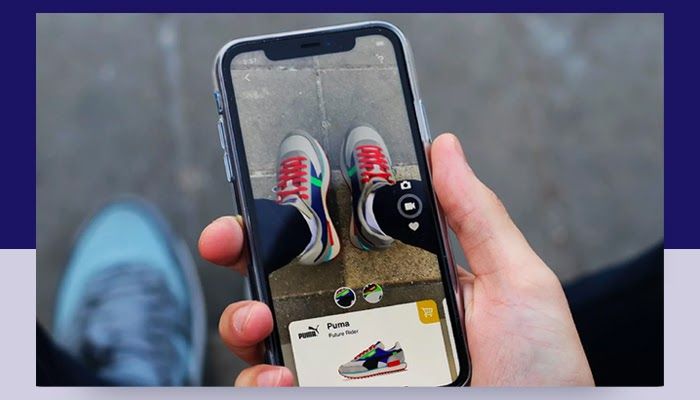
6. Invest in good packaging
Way too often, customers return the product because it was damaged during delivery. While shipping insurance covers additional costs for you, it won’t fix the negative impression customers might receive of your brand.
To prevent goods from getting damaged, especially if they are fragile, invest in high-quality packaging. Great packaging and filling material (such as air pillows, wood wool, customer tissue paper) will help protect your products and also contribute to the unboxing experience.
7. Send out instructions for using your products
Creating memorable post-purchase experiences helps gain loyal customers and prevent customers from sending back goods they have ordered.
This applies especially to items that require some know-how on using them. To help customers ease into using ordered goods, send out an email just before their shipment arrives, including all the necessary instructions to get the best out of the product.
But keep the instructions simple by using a visually enhancing step-by-step guide or a video explanation.
8. Offer alternative options during the returns process
Even if you have advertised your products in the best possible and accurate way, returns will still always be part of online shopping.
However, returns don't necessarily need to result in lost revenue. If you have created a simple and enjoyable return experience and offer high-quality products, customers are likely to shop with you again.
Use the returns process to offer to exchange the product with another color or style or showcase related products that the customer could be interested in based on their previous purchase. This way, you might be able to cross-sell to them instead of simply letting them return the item and leave.
9. Gather data on returns
Customer feedback helps businesses grow in every aspect, be it product development, customer support, or decreasing the return rate.
To gather returns data, start collecting reasons for returns for each product separately. Depending on the items you are selling, the basic causes could include options such as:
- Too big/too small
- The product didn’t match the description
- Just didn’t like it
- The product was broken or damaged
- Wrong item shipped
- Quality defect
You should also leave a comments section where customers can specify what exactly they felt was wrong for all of the options. For instance, if they chose that the item was too small, they could indicate what exactly they mean by it - perhaps the fit was too tight, was there an issue with the length, etc.
By collecting returns data, it’s possible to spot your products’ pain points quickly. You can either take it up with your manufacturer or simply adjust the information provided on your website accordingly.
10. Detect “serial returners”
While most often returns happen because of an error on the retailer’s side, there are still quite a few people who make returns just because they can, commonly known as “serial returners.”

Understanding which sort of “serial returner” you are dealing with lets you decide how to personalize their shopping or return journey to ensure they don’t take advantage of you.
Here are some most common “serial returner” types and ways to deal with them.
Compulsive shoppers
Compulsive shoppers make purchases on impulse. Customers with impulsive buying behavior often feel guilty once they receive their products and end up returning most of the bought items if not all of them.
One option to reduce impulse buying is to take these shoppers out of your subscribers’ lists where you send out discount deals and remove notifications that call for urgency (e.g. last items left).
Wardrobers
Wardrobers buy outfits to wear on a night out only to return them the following day. This practice falls under return fraud that often happens with more expensive products.
Social media wardrobers
Social media wardrobes are in a sense similar, but instead of wearing the clothes on a night out, they buy outfits to capture for social media before returning them.
If you discover that people use your brand for going out for one night or posing on social media, setting up a rental program and marketing it to this specific segment might help avoid revenue loss.
Bracketers
Bracketers refer to people who purchase multiple variants of an item (various sizes, colors, etc.) with the aim to try them on and find the best fit.
To give bracketers more confidence when shopping, make sure you have size guides and real-life images where customers can see the colors more accurately. And if this does not help, you can make adjustments to your return policy.
Take control of your e-commerce returns
Providing an excellent return experience is as important as any other part of the customer journey to ensure you’re making long-lasting customer-brand relationships.
And while returns are inevitable, there are still steps you can take to reduce your return rate and provide a better customer experience at the same time.
By implementing practices covered above, your customers gain a better overview of what you are selling and therefore are more likely to be satisfied with their purchases.





